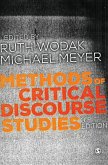- Gebundenes Buch
- Merkliste
- Auf die Merkliste
- Bewerten Bewerten
- Teilen
- Produkt teilen
- Produkterinnerung
- Produkterinnerung
The perfect first step into research methods, assuming no previous knowledge and a cheerful 'you can do this!' tone.
Andere Kunden interessierten sich auch für
![The SAGE Dictionary of Social Research Methods The SAGE Dictionary of Social Research Methods]() Victor JuppThe SAGE Dictionary of Social Research Methods64,99 €
Victor JuppThe SAGE Dictionary of Social Research Methods64,99 €![The SAGE Handbook of Social Research Methods The SAGE Handbook of Social Research Methods]() The SAGE Handbook of Social Research Methods164,99 €
The SAGE Handbook of Social Research Methods164,99 €![The SAGE Handbook of Social Science Methodology The SAGE Handbook of Social Science Methodology]() William Outhwaite / Stephen P Turner (eds.)The SAGE Handbook of Social Science Methodology161,99 €
William Outhwaite / Stephen P Turner (eds.)The SAGE Handbook of Social Science Methodology161,99 €![Introducing Social Networks Introducing Social Networks]() Alain DegenneIntroducing Social Networks190,99 €
Alain DegenneIntroducing Social Networks190,99 €![Realist Inquiry in Social Science Realist Inquiry in Social Science]() Brian D. HaigRealist Inquiry in Social Science51,99 €
Brian D. HaigRealist Inquiry in Social Science51,99 €![Methods of Critical Discourse Studies Methods of Critical Discourse Studies]() Methods of Critical Discourse Studies136,99 €
Methods of Critical Discourse Studies136,99 €![Social Network Analysis for Ego-Nets Social Network Analysis for Ego-Nets]() Nick CrossleySocial Network Analysis for Ego-Nets144,99 €
Nick CrossleySocial Network Analysis for Ego-Nets144,99 €-
-
-
The perfect first step into research methods, assuming no previous knowledge and a cheerful 'you can do this!' tone.
Produktdetails
- Produktdetails
- Verlag: SAGE Publications Ltd
- Seitenzahl: 266
- Erscheinungstermin: 3. Dezember 2015
- Englisch
- Abmessung: 250mm x 175mm x 19mm
- Gewicht: 644g
- ISBN-13: 9781473916197
- ISBN-10: 1473916194
- Artikelnr.: 43892368
- Herstellerkennzeichnung
- Libri GmbH
- Europaallee 1
- 36244 Bad Hersfeld
- gpsr@libri.de
- Verlag: SAGE Publications Ltd
- Seitenzahl: 266
- Erscheinungstermin: 3. Dezember 2015
- Englisch
- Abmessung: 250mm x 175mm x 19mm
- Gewicht: 644g
- ISBN-13: 9781473916197
- ISBN-10: 1473916194
- Artikelnr.: 43892368
- Herstellerkennzeichnung
- Libri GmbH
- Europaallee 1
- 36244 Bad Hersfeld
- gpsr@libri.de
After twenty years in architectural practice in Scotland, England and Switzerland designing a wide range of buildings, industrial, commercial, residential, and renovating and restoring historic buildings, I returned to academic activities when I embarked on a Ph.D. at Oxford Brookes University. My university teaching and examining experience has been at all levels, with the preponderance at postgraduate level. I have supervised to successful completion twenty Ph.D. students and two MPhils, 1 KTP, and examined 13 Ph.D. candidates. I have published several popular textbooks and guides on construction aspects and on how to do research for students and practitioners and how to write Ph.D. theses, Masters and Undergraduate dissertations. As Senior Researcher, Oxford Institute of Sustainable Development - Architectural Engineering Group, my research was based mainly on the technology of building construction - innovative, existing and historic, on vernacular architecture, and issues regarding accessibility in buildings and surroundings. My published papers and reports are read internationally and have been presented at international conferences.
PART ONE: PLANNING AND DESIGNING YOUR RESEARCH
Chapter 1: Theoretical background
Chapter 2: Research basics
Chapter 3: Research strategies and design
Chapter 4: The nature of data
Chapter 5: Doing a literature review
Chapter 6: Defining the research problem
Chapter 7: Ethics
Chapter 8: Writing a research proposal
PART TWO: COLLECTING AND ANALYSING YOUR DATA
Chapter 9: Sampling
Chapter 10: Data collection methods
Chapter 11: Quantitative data analysis
Chapter 12: Qualitative data analysis
PART THREE: WRITING UP YOUR RESEARCH
Chapter 13: Presenting Data Graphically
Chapter 14: Writing up a dissertation or research project
PART FOUR: SUCCEEDING IN YOUR RESEARCH METHODS COURSE
Chapter 15: How to get the most out of your lectures and seminars
Chapter 16: How to Get the Best out of Reading and Note Taking
Chapter 17: How to Write Great Essays
Chapter 1: Theoretical background
Chapter 2: Research basics
Chapter 3: Research strategies and design
Chapter 4: The nature of data
Chapter 5: Doing a literature review
Chapter 6: Defining the research problem
Chapter 7: Ethics
Chapter 8: Writing a research proposal
PART TWO: COLLECTING AND ANALYSING YOUR DATA
Chapter 9: Sampling
Chapter 10: Data collection methods
Chapter 11: Quantitative data analysis
Chapter 12: Qualitative data analysis
PART THREE: WRITING UP YOUR RESEARCH
Chapter 13: Presenting Data Graphically
Chapter 14: Writing up a dissertation or research project
PART FOUR: SUCCEEDING IN YOUR RESEARCH METHODS COURSE
Chapter 15: How to get the most out of your lectures and seminars
Chapter 16: How to Get the Best out of Reading and Note Taking
Chapter 17: How to Write Great Essays
PART ONE: PLANNING AND DESIGNING YOUR RESEARCH
Chapter 1: Theoretical background
Chapter 2: Research basics
Chapter 3: Research strategies and design
Chapter 4: The nature of data
Chapter 5: Doing a literature review
Chapter 6: Defining the research problem
Chapter 7: Ethics
Chapter 8: Writing a research proposal
PART TWO: COLLECTING AND ANALYSING YOUR DATA
Chapter 9: Sampling
Chapter 10: Data collection methods
Chapter 11: Quantitative data analysis
Chapter 12: Qualitative data analysis
PART THREE: WRITING UP YOUR RESEARCH
Chapter 13: Presenting Data Graphically
Chapter 14: Writing up a dissertation or research project
PART FOUR: SUCCEEDING IN YOUR RESEARCH METHODS COURSE
Chapter 15: How to get the most out of your lectures and seminars
Chapter 16: How to Get the Best out of Reading and Note Taking
Chapter 17: How to Write Great Essays
Chapter 1: Theoretical background
Chapter 2: Research basics
Chapter 3: Research strategies and design
Chapter 4: The nature of data
Chapter 5: Doing a literature review
Chapter 6: Defining the research problem
Chapter 7: Ethics
Chapter 8: Writing a research proposal
PART TWO: COLLECTING AND ANALYSING YOUR DATA
Chapter 9: Sampling
Chapter 10: Data collection methods
Chapter 11: Quantitative data analysis
Chapter 12: Qualitative data analysis
PART THREE: WRITING UP YOUR RESEARCH
Chapter 13: Presenting Data Graphically
Chapter 14: Writing up a dissertation or research project
PART FOUR: SUCCEEDING IN YOUR RESEARCH METHODS COURSE
Chapter 15: How to get the most out of your lectures and seminars
Chapter 16: How to Get the Best out of Reading and Note Taking
Chapter 17: How to Write Great Essays









